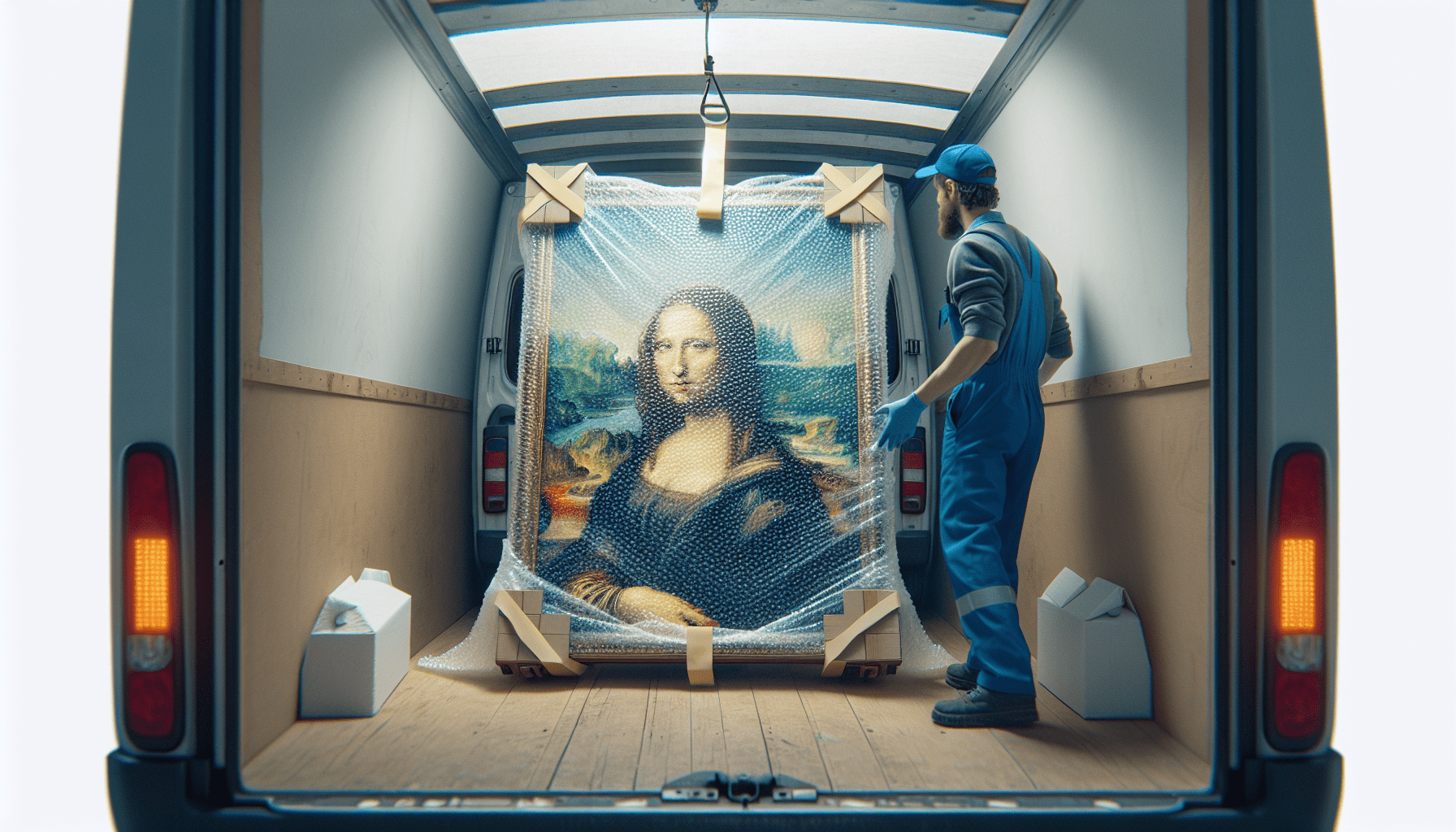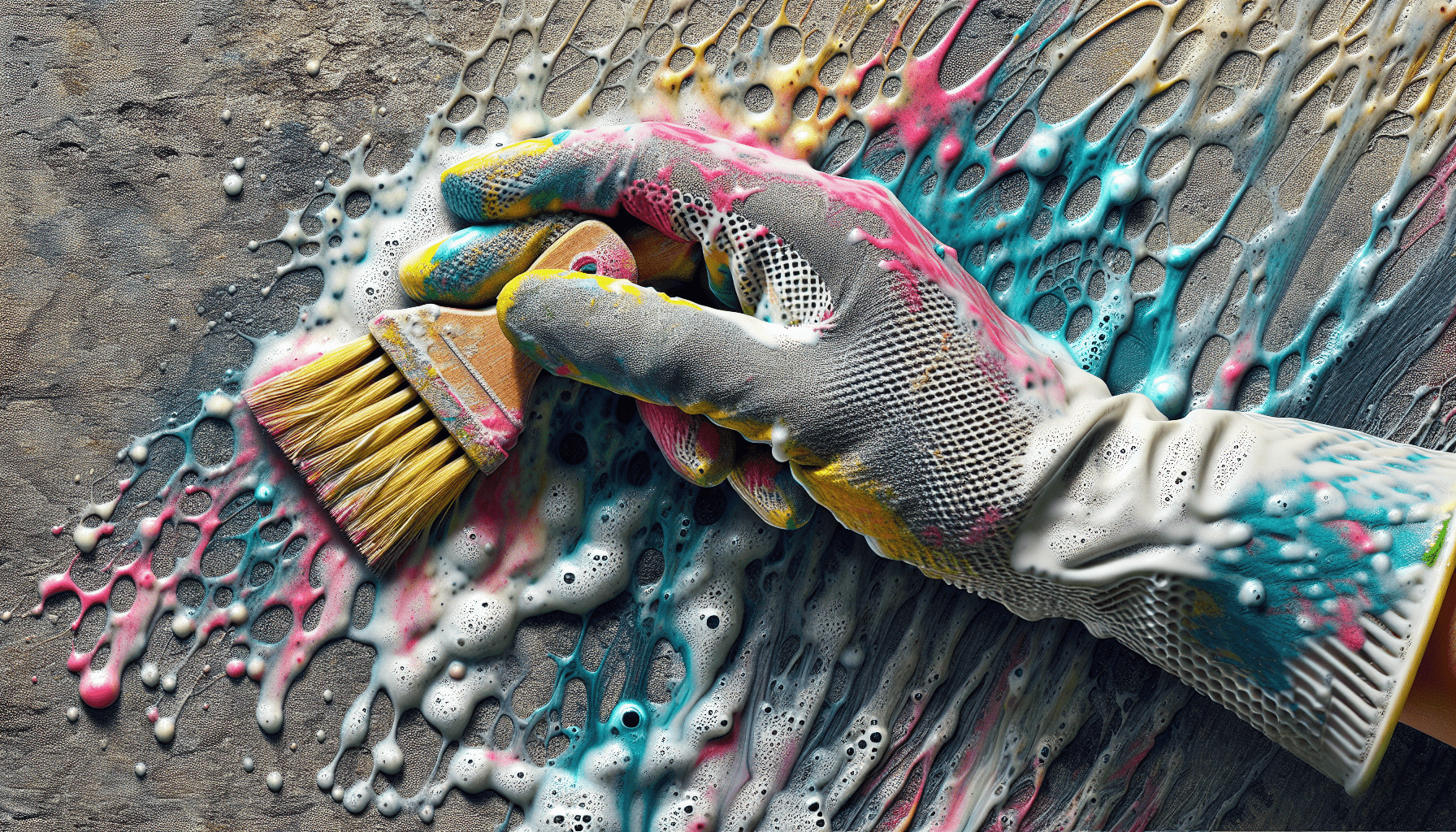Navigating through the complexity of safely transporting wet oil paintings doesn’t have to be a daunting task. “How to Transport Wet Oil Paintings” offers imperative guidance on ensuring your treasured pieces of art reach their destination in pristine condition. You will learn practical strategies that tackle everything from preparation, suitable materials for protective wrapping, to the best methods for transporting these delicate creations without risking any inadvertently damaging smudges or marks.
Preparing the paintings
Properly preparing your paintings for transportation is the first step to ensuring their safety and preservation. When dealing with wet oil paintings, this process requires careful attention and meticulous detail.
Allow the paintings to dry partially
Since we’re dealing with wet oil paintings, you must allow the paintings to dry partially before pursuing any further steps. This step is crucial as it minimizes the risk of potential smudging or damage to the artwork.
Protect the surface with a layer of varnish
Next, you should protect the surface of the oil painting with a coat of varnish. This protective layer forms a barrier between the painting and the external environment, thereby reducing the risk of damage. However, keep in mind that this step should only be performed when the painting is dry to touch but still damp underneath.
Use glassine paper to cover the painting
Glassine paper is an excellent option to cover your painting to avoid accidental smudging or marks during the transportation process. This type of paper is resistant to air, water, and grease, which keeps your artwork safe and secured.
Make sure the paint is fully dry before packaging
Once you have applied a coat of varnish and covered the painting with glassine paper, the final step in preparing your painting for transportation is to ensure that it is completely dry before packaging. This step is crucial to avoid any accidental distortion or damage that could occur during the packing process.
Choosing appropriate packaging materials
Selecting the right materials for packaging your artwork is one of the most critical steps in the transportation process. Remember, the goal is to protect your painting from any external damage.
Sturdy, rigid boxes
The ideal choice for transporting wet oil paintings is sturdy, rigid boxes. These boxes should be robust enough to handle the weight of the artwork and resistant to any physical damage such as tears, punctures, or crushing.
Cardboard corners
To protect the corners and edges of your painting, you should use cardboard corners. These can be cut from thick cardboard and positioned over each corner of the painting, providing additional support and reducing the risk of damage during transportation.
Bubble wrap or foam sheets
Bubble wrap or foam sheets are ideal for providing a cushioning layer to your artwork within the box. They will absorb any shocks or trauma that may occur during the delivery process, thereby reducing the risk of damage to the painting.
Packing tape
High-quality packing tape is essential for securing the wrap around the painting and sealing the box. This tape should be strong and durable to ensure that the package remains intact throughout the journey.
Plastic bags or plastic wrap
Finally, using plastic bags or plastic wrap can provide an additional protective layer for your painting. These materials help to prevent moisture, dust, and other environmental factors from reaching the painting.

Properly securing the painting
Once you have all your packaging materials ready, the next step is to secure the painting properly inside the package. Here’s how you can do it.
Place the painting face up in the box
The painting should be placed face up in the box. This positioning ensures that the painting’s orientation is correct, thereby reducing the likelihood of accidental damage.
Use cardboard corners to protect the edges
Using the cardboard corners that you prepared earlier, protect the edges of the painting. Doing so prevents any potential damage or distortion that could occur during transportation.
Wrap the painting in bubble wrap or foam sheets
Next, wrap the painting in either bubble wrap or foam sheets. This layer forms a protective shield around your artwork, helping it absorb any shocks or bumps that may occur in transit.
Secure the wrapped painting with packing tape
After the painting is wrapped, you can then secure it with packing tape. Ensure that the tape is applied firmly and securely to keep the bubble wrap or foam sheet intact.
Add additional layers of protection if necessary
Depending on the size and value of your painting, you may want to add additional layers of protection. This can include additional layers of bubble wrap, cardboard, or foam sheets, ensuring the best possible protection for your artwork.
Avoiding direct contact with packaging materials
While packaging materials are meant to protect your artwork, it’s important to remember that these materials should not come into direct contact with the painting itself. Here’s why and how to avoid it.
Use glassine paper or plastic bags to prevent contact
To prevent any potential reaction between the painting and the packaging materials, use glassine paper or plastic bags. Place the glassine paper or plastic bag between the painting and the packaging materials, providing a barrier that prevents direct contact.
Ensure no tape or adhesive touches the painted surface
Care should be taken to ensure that no tape or adhesive comes into contact with the painted surface of the artwork. Any such contact could potentially damage the painting, either by leaving a residue behind or by pulling away paint when the tape is removed.
Avoid using newspaper or printed materials as packing material
While newspaper or other printed materials may seem like convenient padding, they should be avoided as packing materials. The ink can potentially transfer onto the painting, causing irreversible damage.

Labeling and identifying the package
Once the painting is securely packed, it’s important to label and identify the package properly. This helps in proper handling during transportation.
Clearly mark ‘Fragile’ on the box
Ensure that your package is clearly marked as ‘Fragile.’ This informs the carrier of the delicate nature of the contents and encourages appropriate handling.
Indicate ‘This side up’ to ensure proper handling
Indicate which side of the package should remain upright by marking ‘This side up’ on the box. This helps to maintain the painting’s orientation and reduce the risk of damage.
Attach a clear label with contact information
Attach a clear label to the package with your contact information, including your address and phone number. Should any issues arise, this information will allow the carrier to communicate with you directly.
Include instructions for handling and opening
Including instructions for handling and opening can further ensure that your painting is treated with care. These instructions can guide the recipient on how to safely open the package to avoid any potential damage to the artwork.
Choosing a reliable shipping method
Transporting your artwork isn’t simply about packaging it properly; it’s also about choosing a reliable shipping method.
Research reputable carriers with experience in art transportation
The carrier you choose plays a significant role in the safe transportation of your painting. Therefore, researchers reputable carriers who specialize in or have experience in transporting artworks.
Consider insurance options
An important aspect to consider when shipping artwork is insurance. Depending on the value of your painting, you may want to explore different insurance options to protect you in the case of damage or loss during transit.
Select a shipping method with tracking capabilities
Choosing a shipping method with tracking capabilities allows you to monitor the progress of your package during transit. This ability to track your package reduces the risk of loss and provides peace of mind that your painting is on its way.
Preparing for extreme weather conditions
During transportation, your painting may be exposed to a variety of environmental conditions. It’s important to prepare for this by taking certain measures.
Avoid shipping during extreme hot or cold temperatures
Extreme hot or cold temperatures can potentially damage your painting. If possible, avoid shipping your artwork during periods of severe weather to minimize risk.
Consider climate-controlled shipping options
Climate-controlled shipping options might be advantageous if your painting is particularly valuable or sensitive to temperature or humidity changes. These services can provide a stable environment for your artwork during transit.
Include insulation materials for added protection
Regardless of the time of year, insulating materials can provide added protection for your painting. Insulating materials like thermocol or foam can regulate the temperature within the box and protect the painting from sharp temperature shifts.
Consider using a professional art shipping service
If you’re uncomfortable or unsure about packaging and shipping your painting yourself, consider using a professional art shipping service.
Art handlers experienced in transporting wet oil paintings
Professional art handling services have trained and experienced experts who specialize in handling and transporting delicate artworks, including wet oil paintings. They leverage the proper techniques and tools to ensure the safety of your artwork.
Specialized packaging and handling techniques
These services utilize specialized packaging and handling techniques to ensure the safety of your artwork. This protects your painting from any potential damage that can occur during transportation.
Customized climate-controlled transport options
Professional art shipping services can offer customized climate-controlled options for the transport of your paintings. This can include temperature and humidity-controlled vans that ensure the best conditions for your artwork.
Insurance and documentation
Ensuring your artwork and maintaining documentation is essential for legal protection and peace of mind.
Appraise the value of the paintings
Before shipping your painting, you should get it appraised to confirm its value. This appraisal will be useful if you decide to insure your painting and in case of any potential disputes or claims.
Ensure the artwork is adequately insured
Insurance is a crucial aspect of shipping. Ensure that the coverage amount accurately reflects the value of the painting. This protects you from potential financial loss in case of damage or loss during shipping.
Keep a detailed record of the paintings’ condition before and after transportation
Maintain a record of your painting’s condition both before and after transportation. This record could be a written description, photographs, or video. This evidence can be beneficial if any disputes or claims arise.
Unpacking and handling upon arrival
Once your painting has reached its destination, the process doesn’t stop there. There are steps to be followed when unpacking and handling the painting upon arrival.
Inspect the package for any signs of damage
Before opening, inspect the package for any possible damage that might have occurred during transit. Any sign such as a punctured or wet box might indicate potential damage to the painting.
Handle the painting with clean hands and gloves
For handling the painting, ensure your hands are clean and preferably glove-covered to prevent oils or grime from transferring to the artwork. This careful handling extends the life of the painting.
Allow the painting to acclimate to the new environment before unwrapping
It’s recommended to let the painting acclimate to the new environment before unwrapping. This gradual adjustment allows the painting to stabilize and prevents potential damage due to sudden changes in temperature or humidity.
Carefully remove all packaging materials
Removing the packaging materials should be done meticulously and carefully to avoid causing any damage to the painting, especially if adhesives such as tape are involved.
Assess the condition of the painting and make any necessary repairs
Finally, it’s time to assess the condition of the painting. If by any chance, there has been damage during the transit, necessary repairs should be carried out by a professional.



